Australia So Much to See


Our 2008 trip was planned to enable us to spend some weeks touring the vast and fascinating Kimberley region, as well as visiting
central Northern Territory
We left
Heading onwards, this was taken a little to the north of the Exmouth turnoff. Although the
We had previously visited
Karratha, Dampier, the Burrup Peninsula (Murujuga), and Roebourne where the museum is one to visit but that also predated
digital photos.
On
We stayed a couple of weeks at Wickham, mainly ‘dog sitting’ for our son and daughter in law while they took a short holiday. The neatly laid out town was constructed in the 1970s for employees of the
The Harding Dam normally supplies water to Karratha, Roebourne, Wickham,
22nd May to 26th September 2008 – featuring the Kimberley region in the north west of Western Australia, and in the central Northern
Territory featuring the MacDonnell Ranges, Kings Canyon, Uluru and Kata Tjuta.
We started out on 22nd May, a little later than originally intended, and headed to visit our son at Wickham with a tight time frame. The drive north did not include visiting any tourist features, as we have been through much of the region on various routes at other
times and we other sights in mind for this holiday.
We missed many wonderful places along the way, some of which we had
been to before, but prior to digital cameras and blogs. Favourite places from previous trips have included; New Norcia, Kalbarri,
Peron Peninsula, Exmouth and the Ningaloo coast, Mount Augustus (Burringurrah), Karijini, Millstream-Chichester and Marble Bar.
Three days after leaving Wickham we reached
After a relaxing two weeks at Wickham, we headed north again. After passing Port Hedland, this small outcrop which marks the turn off to Marble Bar has a crest like an open cocky’s beak. Clouds and showers continued to follow us.
Mikurrinyah
(also Mikurrunya, Mikarunya and Mikurru) is a sacred women's site. This refers to the three hills. Stories told say it
is a baby spirit site where women will become pregnant with multiples, or where women go to become pregnant. The Dreamtime story is
that a man chased three sisters to have his way with them. The three pointed hills are the three sisters and the larger hill is the
man. It is in Ngarla country.
The crack first appeared opening in December 1999. The vicinity of this
hill has been quarried, and this has been blamed by some for the split in the rock. The current Boral Tabba Tabba quarry is
around 800 metres north east of this hill. Some say it occurred following lightning strike, and others blame the little tree
perched on the top.
Since then the hill has gained numerous descriptive nicknames, including cocky’s beak hill, crab claw
hill, split rock, split nipple hill, snapping turtle rock, eagle beak, eagle rock.
Beyond the Harding Dam, we took a track to the top of Table Hill. Rocky hills in the Karratha region look like piles of bare
dark red stones, usually with little or no vegetation.
Near
The present wharf at
This first part of the travelogue takes us to
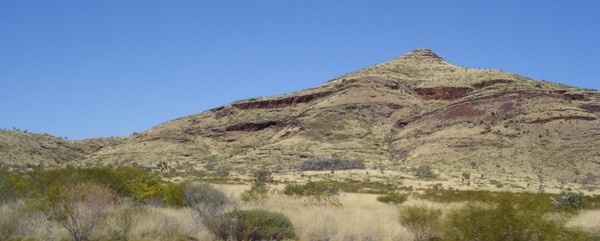
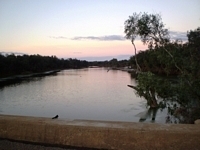
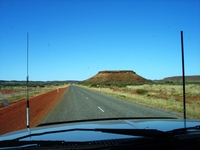
Our 2008 trip was planned to enable us to spend some weeks touring the vast and fascinating

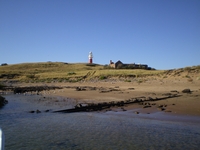
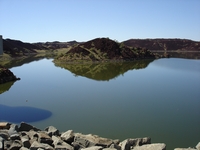
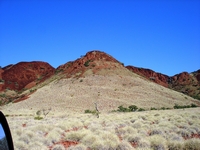
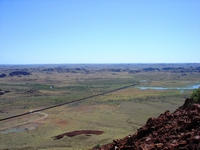
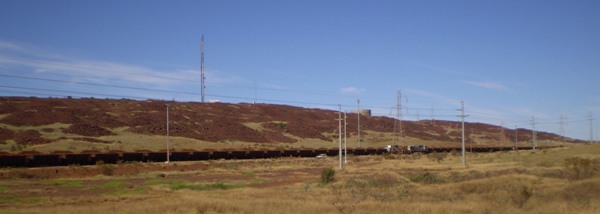
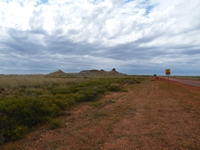
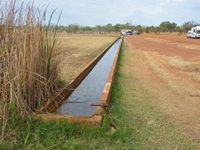
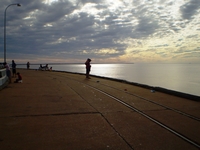

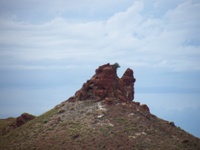
Boral reaches quarry deal with Ngarla
A mining agreement has been reached between the Pilbara's Ngarla people and the Boral Group,
over a quarry near Port Hedland. There is a significant Aboriginal site near the Tabba Tabba quarry. Both parties
have agreed to a final footprint for mining operations which protects the site. Simon Hawkins from the Yamatji Aboriginal
Corporation says he is pleased the company has acknowledged the importance of the site to the Ngarla people.
"It is a very
significant site to the Ngarla people and it had been disturbed," he said.
"The great thing about this agreement is, Boral has obviously
recognised that in its dealings and an agreement has been reached with the group."